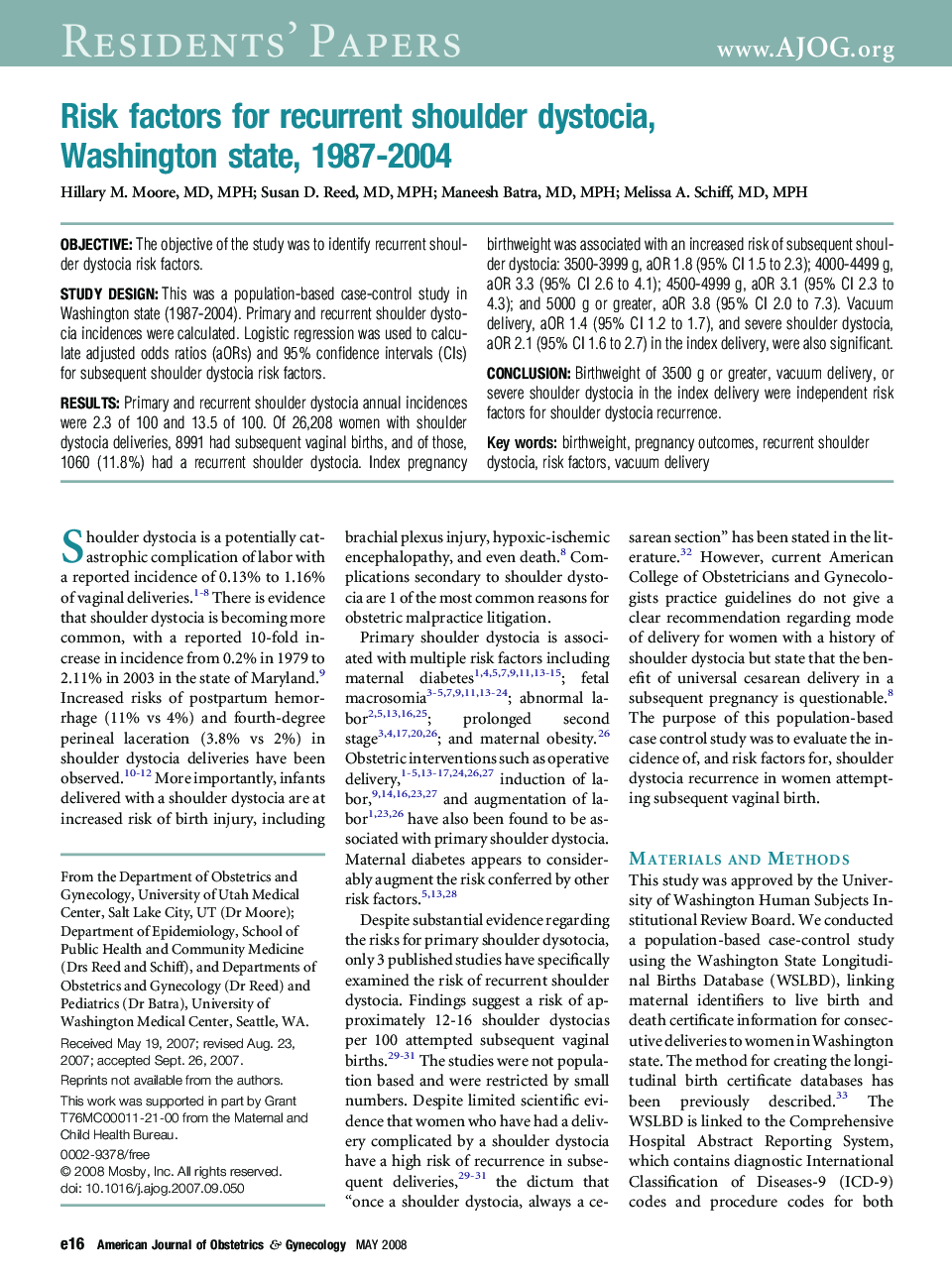| Article ID | Journal | Published Year | Pages | File Type |
|---|---|---|---|---|
| 3438879 | American Journal of Obstetrics and Gynecology | 2008 | 9 Pages |
ObjectiveThe objective of the study was to identify recurrent shoulder dystocia risk factors.Study DesignThis was a population-based case-control study in Washington state (1987-2004). Primary and recurrent shoulder dystocia incidences were calculated. Logistic regression was used to calculate adjusted odds ratios (aORs) and 95% confidence intervals (CIs) for subsequent shoulder dystocia risk factors.ResultsPrimary and recurrent shoulder dystocia annual incidences were 2.3 of 100 and 13.5 of 100. Of 26,208 women with shoulder dystocia deliveries, 8991 had subsequent vaginal births, and of those, 1060 (11.8%) had a recurrent shoulder dystocia. Index pregnancy birthweight was associated with an increased risk of subsequent shoulder dystocia: 3500-3999 g, aOR 1.8 (95% CI 1.5 to 2.3); 4000-4499 g, aOR 3.3 (95% CI 2.6 to 4.1); 4500-4999 g, aOR 3.1 (95% CI 2.3 to 4.3); and 5000 g or greater, aOR 3.8 (95% CI 2.0 to 7.3). Vacuum delivery, aOR 1.4 (95% CI 1.2 to 1.7), and severe shoulder dystocia, aOR 2.1 (95% CI 1.6 to 2.7) in the index delivery, were also significant.ConclusionBirthweight of 3500 g or greater, vacuum delivery, or severe shoulder dystocia in the index delivery were independent risk factors for shoulder dystocia recurrence.
